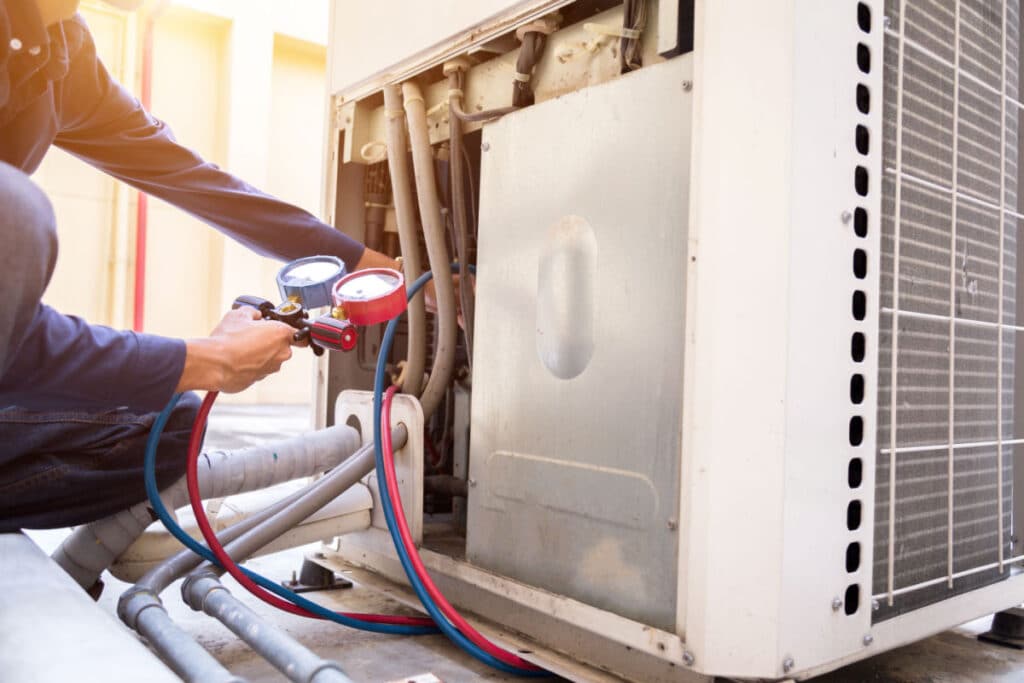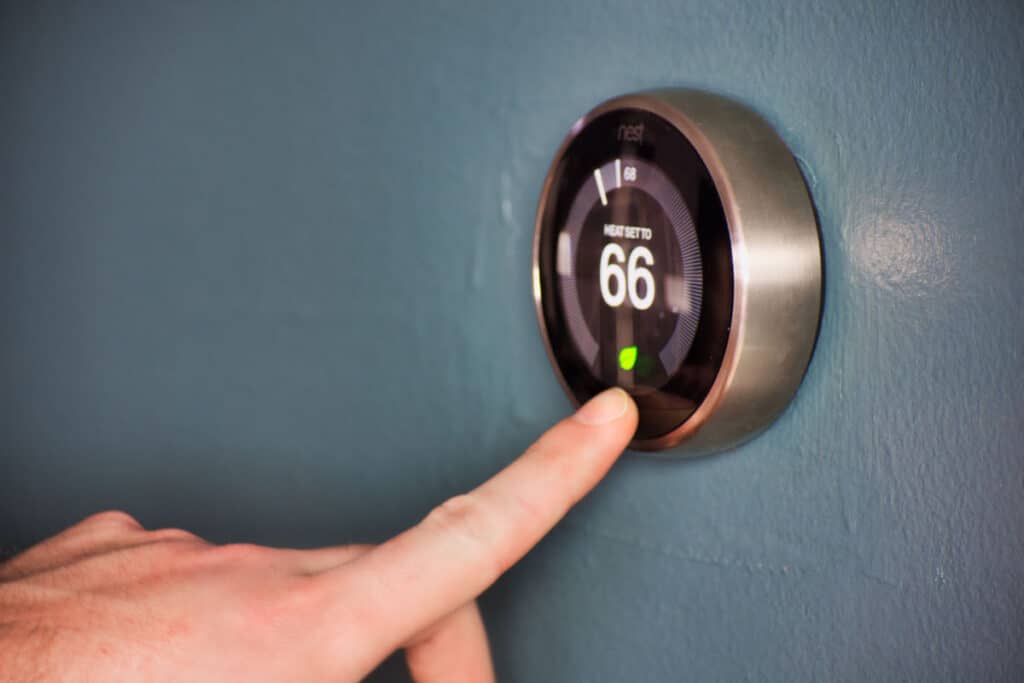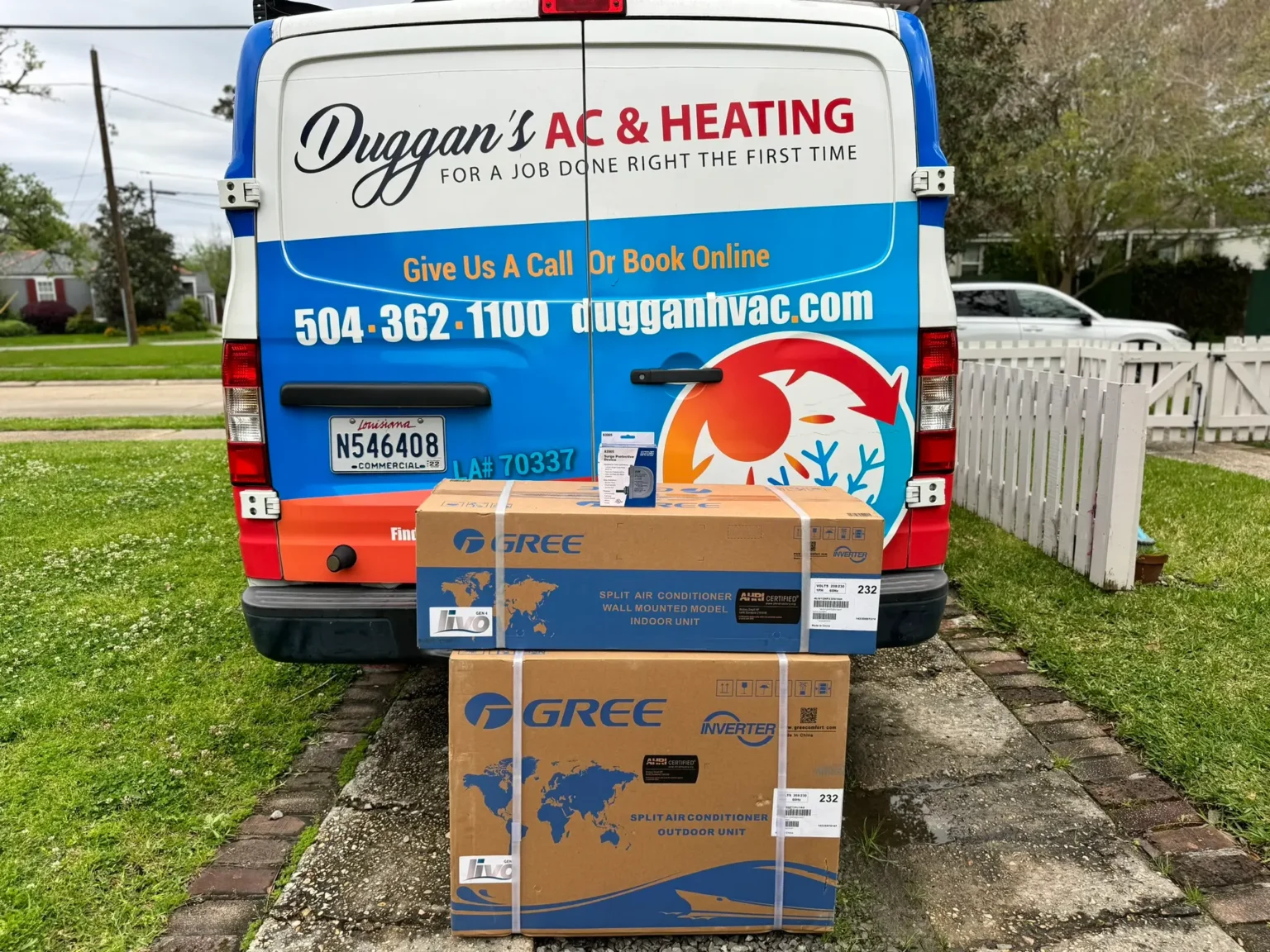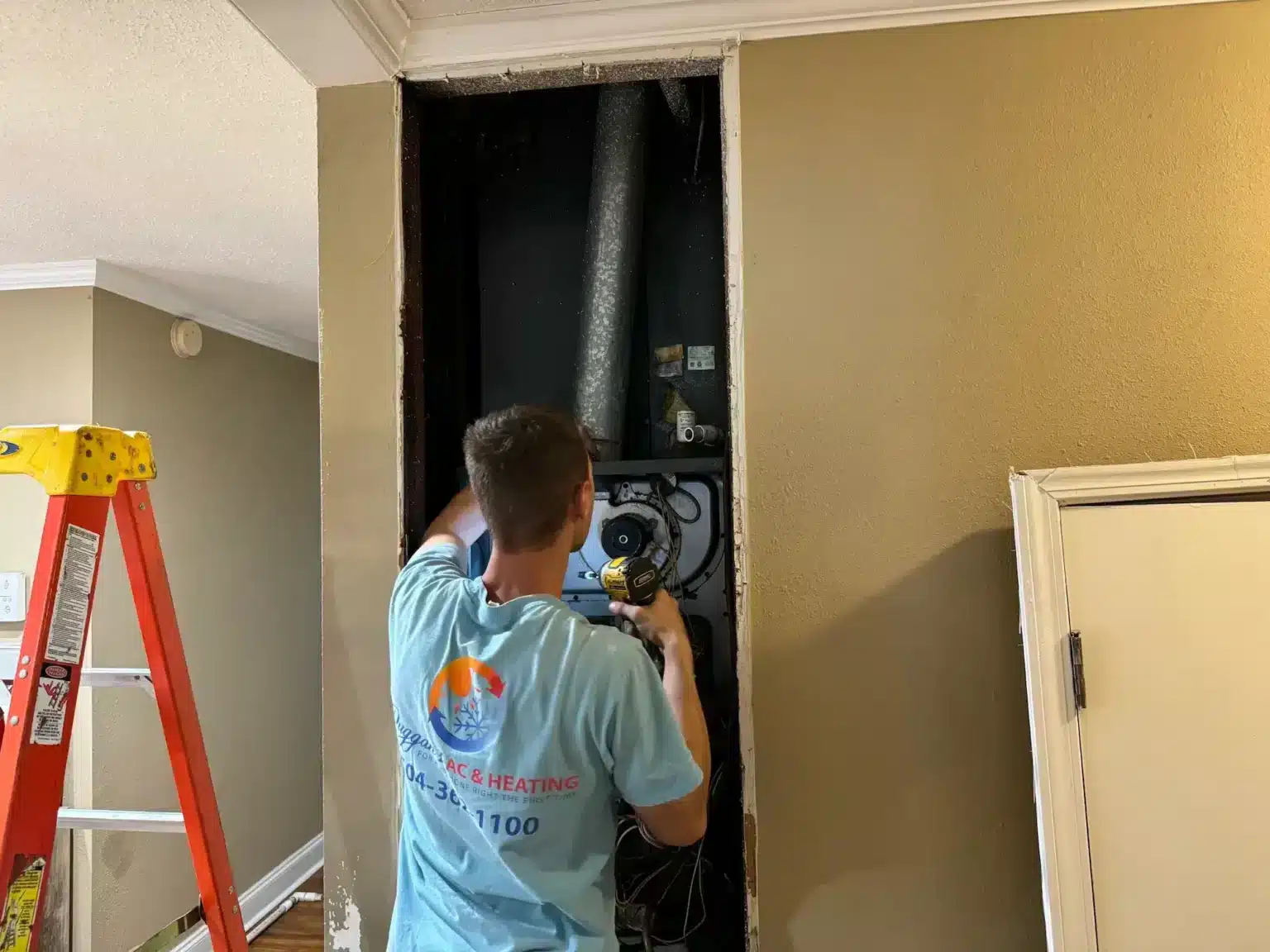
Duggan’s AC & Heating sets clear targets that work in most Gulf South homes:
- 68°F while you’re awake at home. This setting balances comfort and savings. Many households feel good here with a sweater and warm socks.
- 65°F while you sleep. Your body likes a cooler room at night. Heavier blankets do the rest.
- 62–64°F when no one’s home for 4+ hours. Heat does not need to carry an empty house. A setback helps the bill.
These numbers are a strong starting point for the best temperature to set thermostat in winter to save money. Fine-tune a degree at a time until the house feels right. For a background reference on winter setpoints, see the U.S. Department of Energy’s thermostat guidance at Energy Saver.
Why These Winter Settings Save Money
Lower settings cut run time. Less run time means the heater burns less fuel or draws less electricity. That turns into savings you can see on the bill. Small changes matter. Each degree down in winter can trim energy use across many hours each day. Comfort still counts, so Duggan’s AC & Heating uses simple steps that keep rooms livable without cranking the heat.
Simple Comfort Tips That Make Heat Go Further
- Dress the room, not the air. Close curtains at night to hold warmth. Open them in the day to let sun help warm south-facing rooms. Thick curtains slow heat loss through glass. A little sunlight adds free heat.
- Find and stop drafts. A $5 door sweep or simple weatherstrip around a leaky door can stop cold air that keeps the heater running. One roll can seal a few doors. That small job often pays back fast.
- Use ceiling fans on low, clockwise. Warm air rises and sits near the ceiling. A gentle clockwise flow pushes that warmth down the walls without wind chill. Rooms feel warmer at the same setpoint.
- Pick smart zones. Close doors to unused rooms. Heat the spaces you live in. A smaller area reaches temperature faster and stays stable longer.
- Mind the filter. A clogged filter acts like a plugged nose. Airflow drops. The heater runs harder. A fresh filter lets warm air move with less struggle and helps hold your target setting.
Need help with airflow or draft control? Duggan’s AC & Heating can check duct leaks, registers, and attic insulation during a tune-up. See our AC Maintenance page for routine care that keeps equipment steady all year.
Daytime Thermostat Guide
- At home and active: ~68°F. Cooking, moving around, and small chores all add heat. Many families stay warm at 68°F with a sweater.
- Work-from-home tip. If the home office is small, a door undercut or a slight register tweak can send a hair more warm air into that room. That way you stay comfy at 68°F without raising the whole house.
- Kids home from school? Warm snacks, slippers, and a cozy throw beat bumping the thermostat up. Try that first. If hands and feet still feel cold, nudge 1°F and wait 30 minutes.
Nighttime Thermostat Guide
- Sleep target: ~65°F. Most sleepers do great with a comforter and 65°F air.
- Layer the bed. One fitted sheet, one thermal blanket, and a top quilt trap warm pockets of air. That allows a lower setpoint without shivers.
- Draft guards help. A rolled towel at the base of leaky exterior doors near bedrooms can stop cold air that drifts along the floor at night.
Away From Home: Safe Settings That Protect Pipes
- Short trips (4–24 hours): 62–64°F. This setback cuts runtime and protects plumbing in normal Gulf South cold snaps.
- Longer trips: Similar range works for most all-electric or gas systems in our area. Homes with older windows or no attic insulation may prefer the higher end of that range.
If you want remote control for these changes, a smart stat is a good fit. Duggan’s AC & Heating installs models that suit gas furnaces, heat pumps, and dual-fuel systems. See our Smart Thermostat page for options.
Heat Pump Tips for Winter

Heat pumps move heat rather than create it, so steady settings usually cost less than big swings.
- Pick a target and let it ride. Set 68°F for the day and 65°F at night with a gentle schedule. Skip large jumps that can trigger the electric strips for long stretches.
- Use the “Adaptive Recovery” or “Smart Recovery” feature if your stat has it. The stat starts early and brings the home to temperature without long runs on backup heat.
- Keep outdoor units clear. Leaves and debris choke airflow. Clear the top and sides by a few feet. Good airflow helps the unit hold your setpoint with less watt draw.
Want a professional check on a heat pump before a cold snap? Book Heater Maintenance. Duggan’s AC & Heating inspects defrost cycles, strips, and refrigerant charge.
Gas Furnace Tips for Winter
- Filter first. A clean filter keeps the heat exchanger in a safe range and pushes warm air to rooms with less strain.
- Even out rooms. Slight register balancing sends more air to cool rooms and eases back in hot spots. A quick tune can fix uneven rooms so you can hold 68°F without some people sweating and others shivering.
- Look at the flame. A steady blue flame is normal. Yellow tips or flicker call for a pro visit.
If your furnace struggles to reach target temperature or cycles on and off a lot, schedule AC Repair with Duggan’s AC & Heating. Fast fixes prevent bigger bills later.
Smart Thermostat Scheduling Made Easy
Set a simple weekday/weekend plan:
Weekdays
- 6:00 a.m. 68°F for morning routines. Coffee, shower, kids to school.
- 8:30 a.m. 62–64°F while the home sits empty. A setback saves energy through the day.
- 5:00 p.m. 68°F for dinner and family time. Warm rooms feel cozy without a heavy bill.
- 10:30 p.m. 65°F for sleep.
Weekends
- 8:00 a.m. 68°F for breakfast and chores.
- 11:00 p.m. 65°F for sleep.
Smart thermostats handle this plan well and can learn your routine. Duggan’s AC & Heating can install and connect the model that fits your system. See our Smart Thermostat options.
Humidity and Airflow: Small Tweaks, Big Comfort
- Humidity too low makes air feel colder. Dry air pulls moisture from skin and lips. That can trick you into raising the stat. If indoor humidity drops far below 30%, the room may feel chilly at 68°F.
- Humidity too high feels clammy. Target a winter range near 35–45% in our area. That range feels warmer at the same setpoint.
- Gentle circulation helps. A fan on low keeps warm air from pooling at the ceiling. The same setpoint suddenly feels better.
If humidity swings a lot at your place, Duggan’s AC & Heating can test and suggest options during AC Maintenance.
Contact Duggan’s AC & Heating
Need help setting up the best temperature to set thermostat in winter to save money for your home? Call (504) 215-7031 or send a note on our Contact Page.
Planning an upgrade or a fix?
- New or replacement system: Air Conditioning Installation & Replacement
- Tune-ups and cleaning: AC Maintenance
- Fast repair visits: AC Repair
- Control upgrades: Smart Thermostat
- Heat pump care: Heater Maintenance
Service areas: Air Conditioning Repair New Orleans • AC Repair Metairie • AC Repair Belle Chasse • AC Repair Gretna
Frequently Asked Questions
What is the safest winter setback while protecting pipes?
Most metro New Orleans homes do well near 62–64°F for daytime away periods. Super cold nights are rare here. Homes with past freeze issues may prefer the higher end of that range.
Is 68°F always the best temperature to set thermostat in winter?
It’s a strong start, backed by common practice. Some owners land at 67°F or 69°F for the same comfort. One degree at a time is the right way to fine-tune.
Will a smart stat really save money in winter?
Yes, if you use scheduling, auto setback, and gentle recovery. Those features support steady heat without long runs on backup heat. See options on our Smart Thermostat page.
What if the home never reaches the target setpoint?
That points to airflow, heat loss, low refrigerant on a heat pump, or a furnace problem. Schedule AC Repair so Duggan’s AC & Heating can test and fix it.
Does maintenance affect the best temperature to save money?
Yes. Clean filters, correct blower speeds, and safe burners all help the system deliver steady heat. Book Heater Maintenance before the first cold front.




